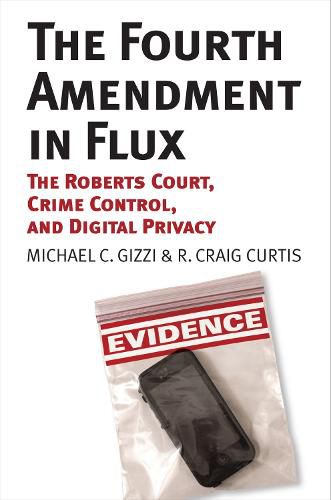Readings Newsletter
Become a Readings Member to make your shopping experience even easier.
Sign in or sign up for free!
You’re not far away from qualifying for FREE standard shipping within Australia
You’ve qualified for FREE standard shipping within Australia
The cart is loading…






When the Founders penned the Fourth Amendment to the Constitution, it was not difficult to identify the persons, houses, papers, and effects they meant to protect; nor was it hard to understand what unreasonable searches and seizures were. The Fourth Amendment was intended to stop the use of general warrants and writs of assistance and applied primarily to protect the home. Flash forward to a time of digital devices, automobiles, the war on drugs, and a Supreme Court dominated by several decades of the jurisprudence of crime control, and the legal meaning of everything from effects to seizures has dramatically changed. Michael C. Gizzi and R. Craig Curtis make sense of these changes in The Fourth Amendment in Flux. The book traces the development and application of search and seizure law and
MYUjurisprudence over time, with particular emphasis on decisions of the Roberts Court.
Cell phones, GPS tracking devices, drones, wiretaps, the Patriot Act, constantly changing technology, and a political culture that emphasizes crime control create new challenges for Fourth Amendment interpretation and jurisprudence. This work exposes the tensions caused by attempts to apply pretechnological legal doctrine to modern problems of digital privacy. In their analysis of the Roberts Court’s relevant decisions, Gizzi and Curtis document the different approaches to the law that have been applied by the justices since the Obama nominees took their seats on the court. Their account, combining law, political science, and history, provides insight into the court’s small group dynamics, and traces changes regarding search and seizure law in the opinions of one of its longest serving members, Justice Antonin Scalia.
At a time when issues of privacy are increasingly complicated by technological advances, this overview and analysis of Fourth Amendment law is especially welcome-an invaluable resource as weaddress the enduring question of how to balance freedom against security in the context of the challenges of the twenty-firstcentury.
$9.00 standard shipping within Australia
FREE standard shipping within Australia for orders over $100.00
Express & International shipping calculated at checkout
When the Founders penned the Fourth Amendment to the Constitution, it was not difficult to identify the persons, houses, papers, and effects they meant to protect; nor was it hard to understand what unreasonable searches and seizures were. The Fourth Amendment was intended to stop the use of general warrants and writs of assistance and applied primarily to protect the home. Flash forward to a time of digital devices, automobiles, the war on drugs, and a Supreme Court dominated by several decades of the jurisprudence of crime control, and the legal meaning of everything from effects to seizures has dramatically changed. Michael C. Gizzi and R. Craig Curtis make sense of these changes in The Fourth Amendment in Flux. The book traces the development and application of search and seizure law and
MYUjurisprudence over time, with particular emphasis on decisions of the Roberts Court.
Cell phones, GPS tracking devices, drones, wiretaps, the Patriot Act, constantly changing technology, and a political culture that emphasizes crime control create new challenges for Fourth Amendment interpretation and jurisprudence. This work exposes the tensions caused by attempts to apply pretechnological legal doctrine to modern problems of digital privacy. In their analysis of the Roberts Court’s relevant decisions, Gizzi and Curtis document the different approaches to the law that have been applied by the justices since the Obama nominees took their seats on the court. Their account, combining law, political science, and history, provides insight into the court’s small group dynamics, and traces changes regarding search and seizure law in the opinions of one of its longest serving members, Justice Antonin Scalia.
At a time when issues of privacy are increasingly complicated by technological advances, this overview and analysis of Fourth Amendment law is especially welcome-an invaluable resource as weaddress the enduring question of how to balance freedom against security in the context of the challenges of the twenty-firstcentury.